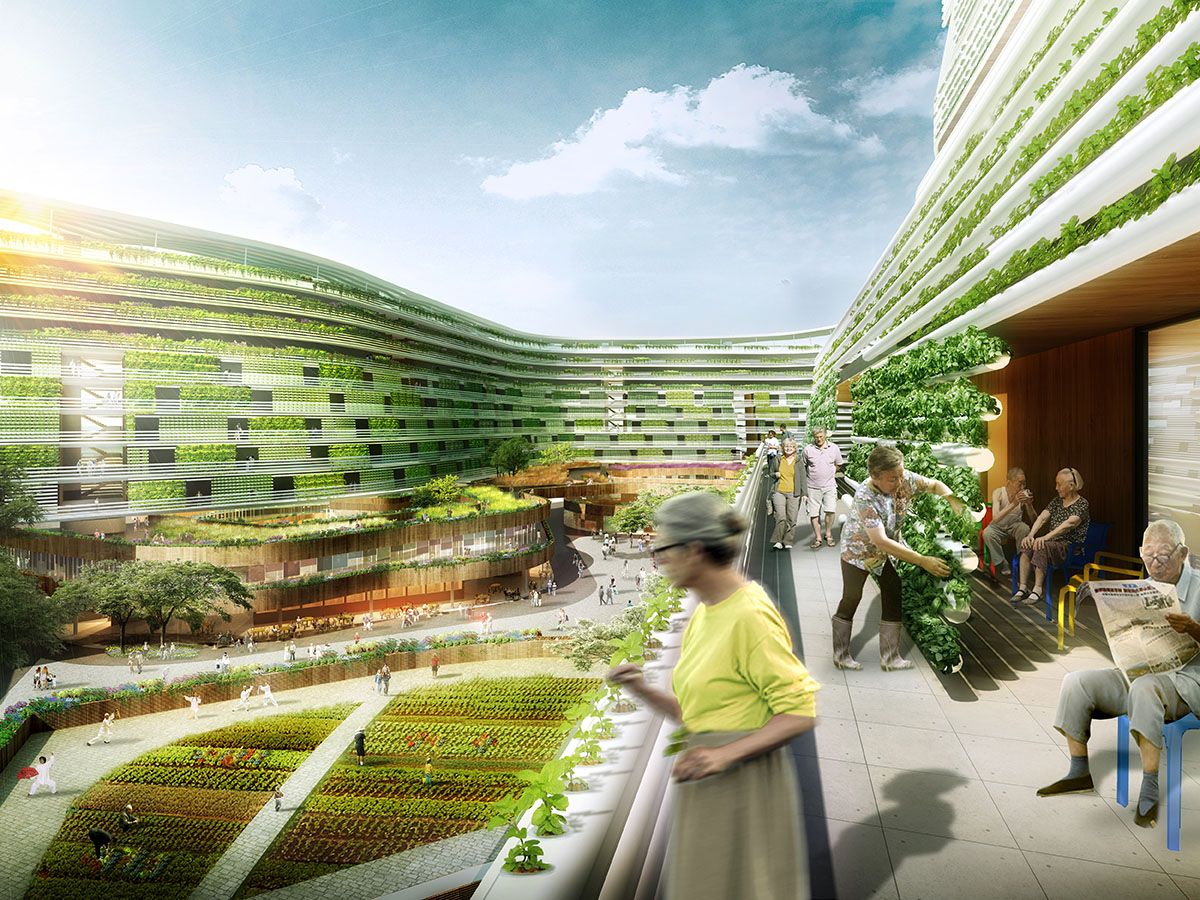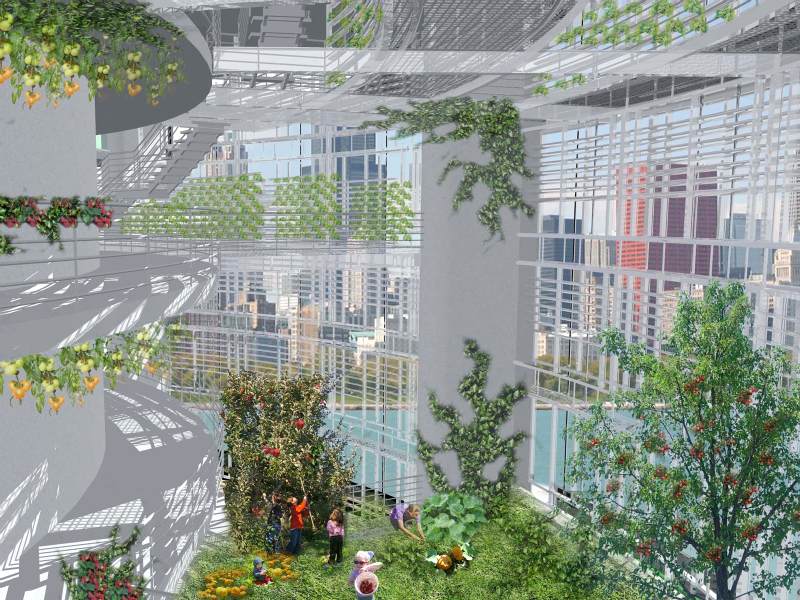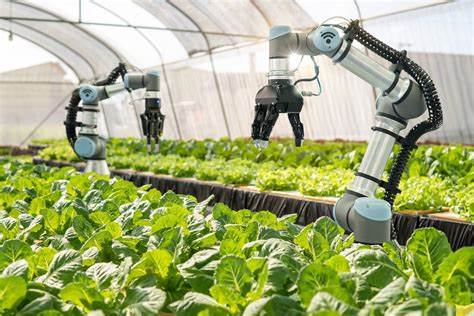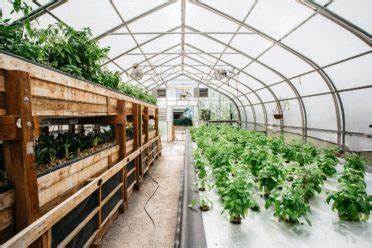
Vertical Farming: Revolutionizing Food Production for a Sustainable Future
Introduction
Vertical farming is an innovative agricultural practice that offers a promising solution to the challenges of food production in a crowded and resource-constrained world. By utilizing vertical space and advanced technologies, this groundbreaking approach addresses the growing demand for fresh and nutritious produce. In this article, we will explore the historical background, key concepts, advantages, case studies, current trends, challenges, and future outlook of vertical farming.
Historical Background
The concept of vertical farming dates back to the early 20th century when visionaries in architecture and science began envisioning ways to overcome the limitations of traditional agriculture. Notable figures such as Dr. Gilbert Ellis Bailey and Dr. Dickson Despommier played crucial roles in popularizing the idea of vertical farming as a means to address food production challenges. Over the years, the concept has evolved, reaching key milestones such as the development of hydroponics and the emergence of vertical farming as a viable alternative to conventional farming.
Key Concepts and Definitions
Vertical farming involves the practice of growing crops in vertically stacked layers or structures, making efficient use of space. Key terms associated with vertical farming include hydroponics, aeroponics, and aquaponics. Hydroponics involves growing plants in nutrient-rich water without soil, while aeroponics utilizes a misting system to deliver nutrients to plant roots. Aquaponics combines hydroponics with fish farming, creating a symbiotic relationship between plants and aquatic animals.

Main Discussion Points
Vertical Farming Techniques
Vertical farming employs various techniques to optimize plant growth and yield. Hydroponics provides precise control over nutrient delivery and eliminates the need for extensive soil usage. Aeroponics takes this a step further by misting the plant roots with a nutrient-rich solution, reducing water and nutrient consumption. Each technique has its own advantages and disadvantages, with hydroponics being more established and aeroponics offering increased efficiency and reduced water usage.
Environmental Benefits of Vertical Farming
Vertical farming offers significant environmental benefits compared to traditional agriculture. By utilizing vertical space, it minimizes land requirements and transforms unused urban areas into productive farms. Additionally, vertical farms employ advanced irrigation systems that consume less water, mitigating the pressure on freshwater resources. Furthermore, vertical farming has the potential to reduce carbon emissions by minimizing the need for long-distance transportation of produce and eliminating the use of synthetic pesticides.
Economic and Social Implications
Vertical farming holds promise for local food production, reducing dependence on imports and enhancing food security. By establishing vertical farms within urban areas, transportation costs can be significantly reduced, leading to lower prices for consumers. Moreover, vertical farming has the potential to create employment opportunities, particularly in communities where traditional agriculture may not be viable. Its integration into urban landscapes can foster community development and promote sustainable practices.
Case Studies or Examples
AeroFarms
AeroFarms is a leading vertical farming company that has successfully implemented its innovative approach to food production. By utilizing aeroponics and LED lighting systems, AeroFarms is able to grow leafy greens and herbs in a controlled environment. This approach ensures optimal plant growth while using 95% less water compared to traditional farming methods. AeroFarms’ vertical farms are located in urban centers, reducing transportation costs and providing access to fresh produce in food deserts.

Plenty
Plenty is another prominent player in the vertical farming industry. By combining cutting-edge technologies with vertical space utilization, Plenty focuses on producing high-quality fruits and vegetables using minimal resources. Their vertical farms are designed to maximize efficiency and yield, enabling year-round production. By establishing farms in close proximity to urban areas, Plenty aims to make fresh and nutritious produce more accessible while reducing the environmental impact of traditional agriculture.
Current Trends or Developments
The integration of artificial intelligence (AI) and automation has emerged as a significant trend in vertical farming. AI algorithms analyze data collected from sensors to optimize environmental conditions for plant growth. Automation further enhances efficiency by reducing manual labor and ensuring precise nutrient delivery. Additionally, recent research findings have highlighted advancements in lighting systems, genetic engineering, and plant breeding techniques, further enhancing the potential of vertical farming.
Challenges or Controversies
While vertical farming holds immense promise, it faces several challenges. High initial costs associated with setting up vertical farms often limit their scalability and accessibility. Concerns about energy consumption due to the extensive use of artificial lighting and climate control systems have also been raised. Additionally, the potential monopolization of the vertical farming industry by large corporations has sparked controversy, raising questions about equitable access to this technology.

Future Outlook
The future of vertical farming looks promising, with advancements in technology and increased awareness of its benefits. As the world’s population continues to grow, vertical farming has the potential to revolutionize global food production. With further innovations, increased scalability, and improved cost-effectiveness, vertical farming could become a mainstream solution for sustainable agriculture, ensuring food security for future generations.
Conclusion
Vertical farming represents a game-changing approach to food production, harnessing advanced technologies and sustainable practices to meet the challenges of a rapidly growing global population. By maximizing space, minimizing resource usage, and reducing environmental impacts, vertical farming fosters innovation in the agricultural sector. With continued research, investment, and collaboration, vertical farming has the potential to transform the way we produce and consume food.
References
Despommier, D. (2011). The Vertical Farm: Feeding the World in the 21st Century. St. Martin’s Griffin.
Kotzen, B., & Appelbaum, S. (2019). Vertical Farming: Sustainable Architectural Design. Routledge.
AeroFarms: https://www.aerofarms.com/
Plenty: https://www.plenty.ag/




